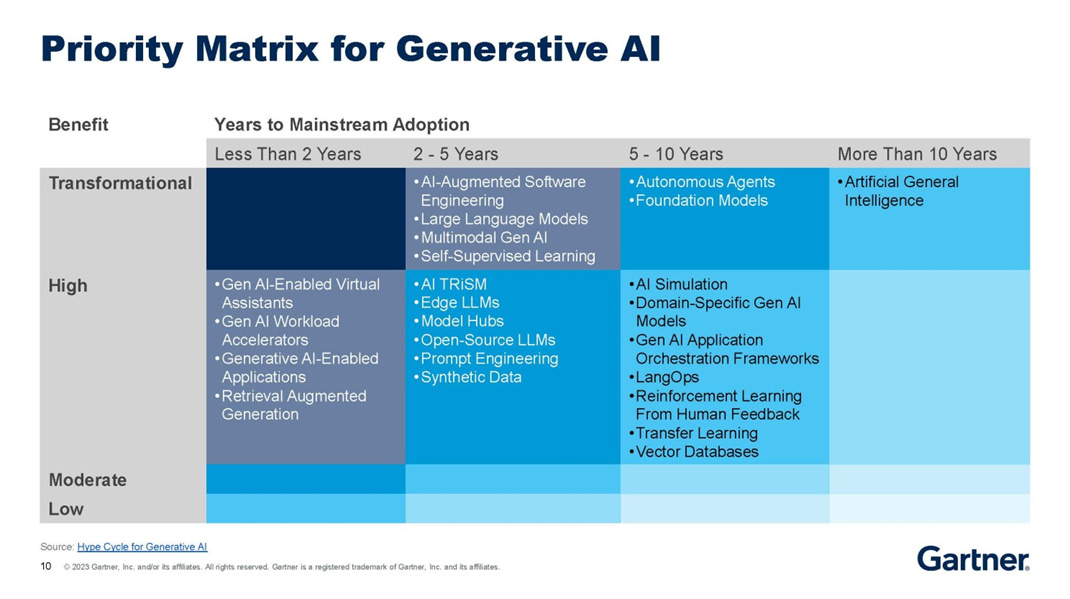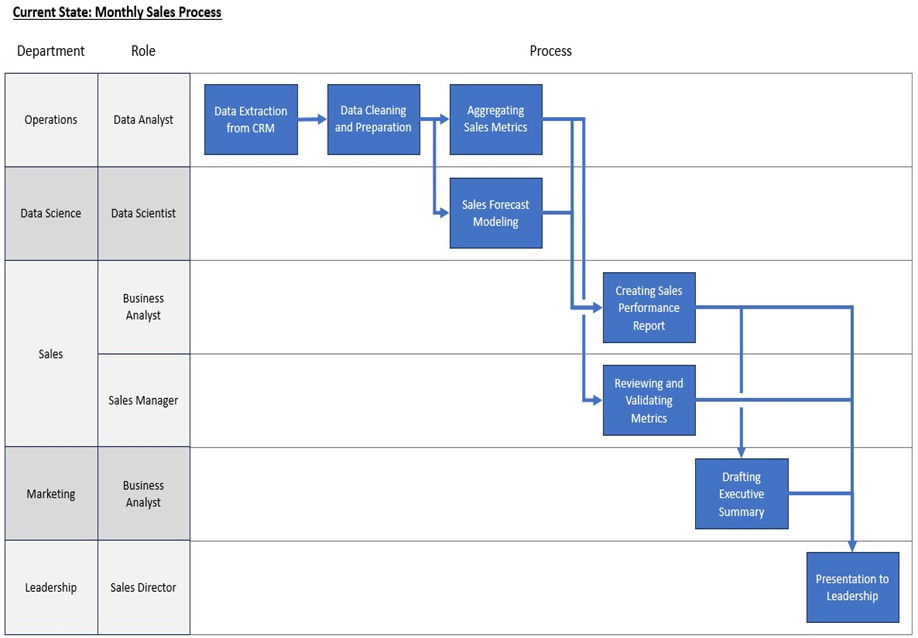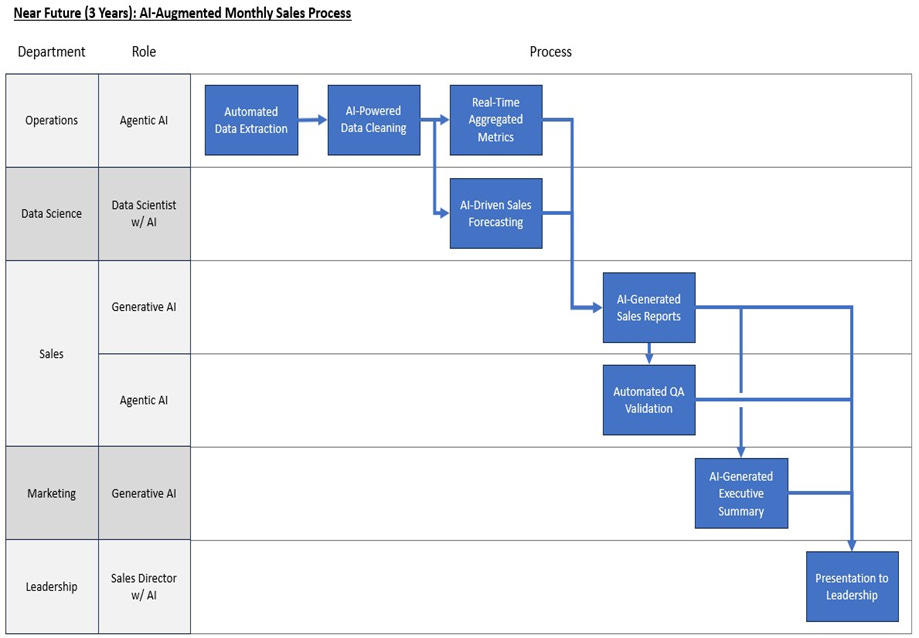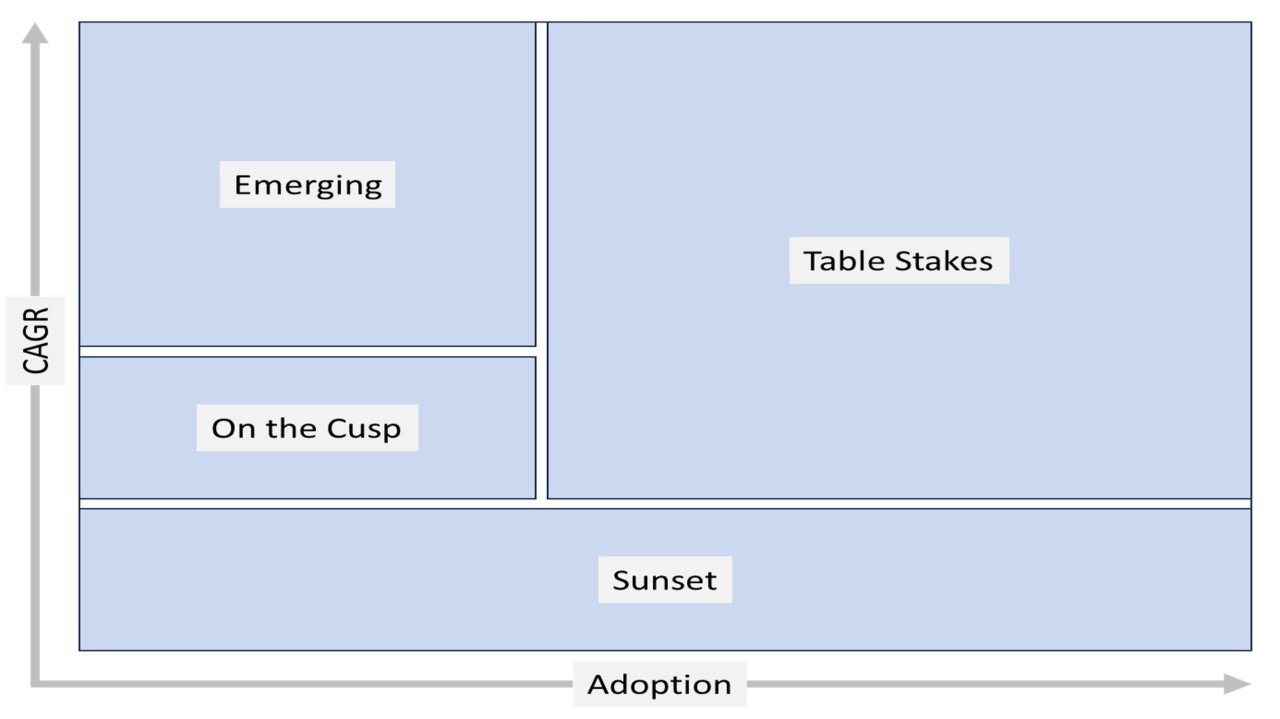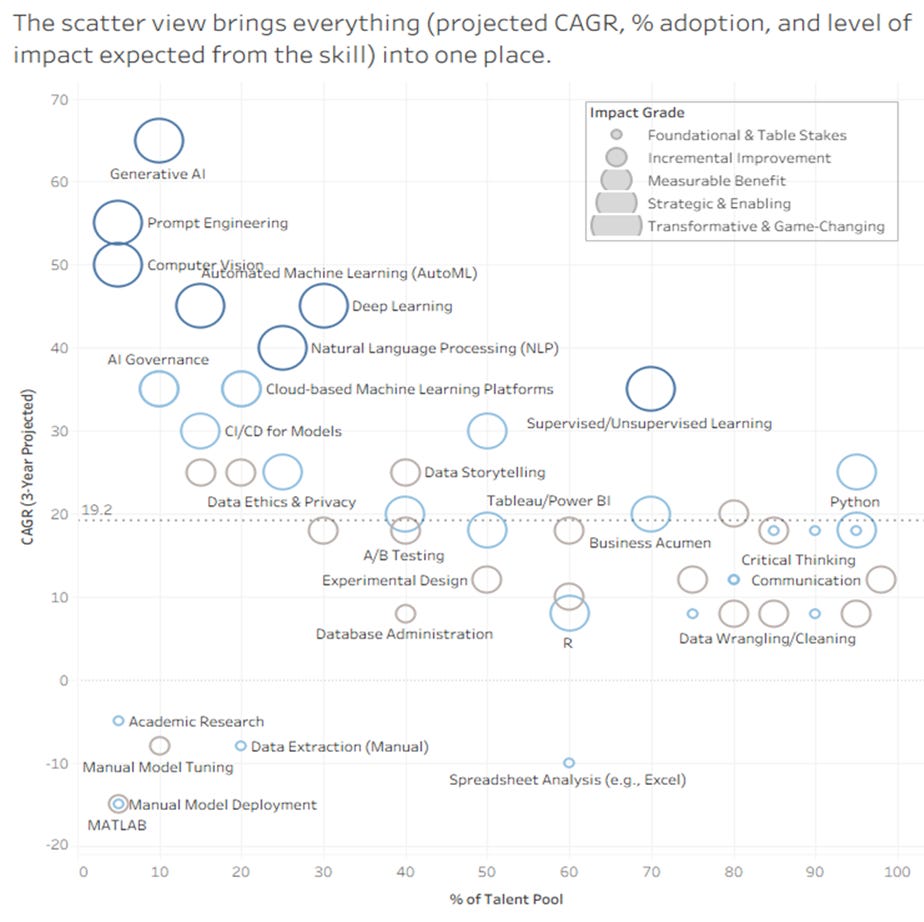Applying the Rule of 72 to Workforce Skill Obsolescence (Part 2): From Compass to Roadmap
Talent Development
Thanks to Kristin Saboe, Ph.D. (https://www.linkedin.com/in/ksaboe/) for her thoughtful edits and collaboration on this article.
Part 1 of this series introduced a flipped version of the Rule of 72, applying a financial shortcut to measure how quickly skills become obsolete. The concept served as a compass, illustrating the pace at which roles and capabilities decline if no reskilling occurs. A compass, however, only provides direction. This second article focuses on the roadmap, or how to translate directional clarity into workforce decisions. By layering multiple data sources, mapping workflows, and examining priority roles in greater detail, it becomes possible to identify where investments should be placed, which skills require immediate attention, and how to remain competitive in an environment defined by accelerating skill cycles.
Generalizations Are Helpful, but Precision Matters
Aggregated data across job families provides useful context, highlighting broad patterns of skill growth and decline. These generalizations can guide initial workforce planning by showing which categories of roles are evolving faster than others. However, the signal often becomes diluted when roles with very different growth trajectories are combined. Important priority roles risk being overlooked or over/undervalued if they are hidden within broader categories.
The example of Cloud Engineering illustrates this point clearly. When grouped with other IT-related roles, its exceptional growth rate was buried near the middle of the pack, masking its urgency as a priority role with a more aggressive evolution of its skills.
Precision requires peeling back a layer, isolating specific roles, and focusing on those that drive the greatest impact. Identifying these roles ensures investment is directed where obsolescence is most rapid and where capability development will yield the highest return.
A table with details for all content in Figure 1 is provided below in Figure 2.
Triangulating Data Sources
No single source of information is sufficient to forecast the future of skills. A more accurate and reliable picture emerges when multiple streams of data are combined. Vendor platforms provide vetted adoption and growth trends, particularly valuable for historical and present states. Generative AI outputs are not perfect but often deliver directionally correct signals that should not be discarded. They can also help fill the void found in future state CAGRs. Gartner Hype Cycles and their complementary Priority Matrices add an essential dimension by highlighting both timing and expected impact. As we will review later, workflow mapping ties these streams together by connecting shifts in skills directly to evolving tasks within roles.
Using these inputs in concert strengthens confidence in projections. Vendor data offers rigor, AI models offer speed and breadth, Hype Cycles contextualize emerging capabilities, and workflow mapping bridges theory to practice. This triangulated approach reduces blind spots and ensures that workforce planning decisions are not dependent on a single perspective.
Workflow Mapping: Theory to Application
Workflow mapping translates abstract models of skill change into practical evidence of how work evolves. By charting the current state of tasks and the future state as technology is adopted, it becomes clear not only which skills are changing but how the nature of roles themselves will shift. Please refer to the article Transforming Workflows with AI: A Roadmap to Efficiency, accessible here for more details. From the article, the Data Scientist role provides a useful example, as in the current state (see Figure 4), a core task is Sales Forecast Modeling. In the future state (see Figure 5), that task transitions into AI-Driven Sales Forecasting, and the role itself evolves into Data Scientist with AI.
An excerpt from the article for this transition from the current state to the future state reads: AI begins augmenting workflows, taking over repetitive and routine tasks. This hybrid model allows humans to focus on oversight and strategic input while AI handles tasks such as data aggregation, anomaly detection, and preliminary analysis. By enabling parallel execution of tasks, AI significantly reduces cycle times and improves data accuracy. AI automates repetitive tasks, such as data extraction and validation, while humans validate AI outputs, ensuring quality and providing contextual insights. Processes begin to operate in parallel, enhancing scalability and efficiency. Metrics for this stage include a cycle time of approximately 8.5 hours, accuracy improving to about 97%, and a cost per process reduced to $525. This phase is critical for testing and refining AI systems. Pilot programs, guided by subject matter experts and Lean Six Sigma Black Belts, help organizations validate workflows, address challenges, and build confidence in AI capabilities. Note that AI is still quite capable of making mistakes, or hallucinations.
This method reveals four critical metrics that are difficult to capture with skill forecasts alone. It identifies the specific tasks that are evolving, the AI tools or emerging capabilities that are being introduced, the level of adoption effort required, and the overall impact on the role. By working at this level of granularity, the gap between theory and application is reduced, providing a clear connection between strategy and day-to-day execution.
Scatter Plot Insights
As presented in part one of this series, visualizing skills on a scatter plot creates a powerful lens for prioritization. The x-axis represents adoption, the percentage of people in a role who currently possess the skill. The y-axis represents growth, the projected compound annual growth rate over the next three years. When these two measures are plotted together, patterns emerge that reveal which skills deserve attention.
High adoption combined with positive growth indicates table stakes, foundational capabilities that define the baseline for success in a role. Low adoption combined with high growth highlights emerging skills, the early signals of what may soon become essential. Skills with moderate adoption and growth fall on the cusp, while those with negative growth indicate sunset skills in decline.
Obtaining impact from a variety of sources, as described earlier, provides additional value. This insight can be leveraged, as this view becomes even more powerful when impact is added (see Figure 7).
By multiplying CAGR and impact, skills can be ranked within a single role, enabling sharper investment decisions. This approach ensures that training and development budgets are directed toward the skills that not only grow fastest but also create the greatest value for the role and the organization.
Leadership Imperative: Roles as Portfolios
Roles should be treated as dynamic portfolios rather than static job descriptions. Just as financial portfolios are rebalanced to reflect changing markets, workforce portfolios must be continuously adjusted to reflect shifts in skill demand. Skills rise, mature, and decline at different rates, and the composition of a role should evolve accordingly.
Leaders who adapt quickly will gain a competitive advantage. Organizations that reskill faster than their peers not only maintain stronger talent pipelines but also position themselves more effectively in the market. This requires prioritizing investment in priority roles where obsolescence is fastest, rewarding learning agility as a core capability, and ensuring that workforce strategies align with the accelerating cycles driven by AI and other emerging technologies.
This perspective shifts the leadership mindset from maintenance to active management. Roles are no longer static containers of skills but dynamic systems that require constant rebalancing. Leaders who recognize this reality and act decisively will set the pace for their industries.
Conclusion and Practical Takeaways
The Rule of 72 provides a useful compass for understanding how quickly skills expire, but its true value comes when applied as a roadmap for action. Measuring adoption and growth rates highlights the pace of change, while triangulating multiple data sources and mapping workflows connects those measurements to real work. Scatter plots and CAGR × impact calculations sharpen prioritization, and treating roles as portfolios ensures continuous rebalancing as conditions evolve.
Several actions emerge from this framework. Investments should be concentrated on priority roles that combine high growth with high impact. Learning agility must be recognized and rewarded as a core capability across the workforce. Multiple data streams should be used to forecast future skill needs, reducing reliance on any single perspective. Workflow mapping, facilitated by trained Six Sigma and change practitioners, should be placed at the center of transformation efforts, bridging the gap between theory and application. Finally, leaders must adopt a portfolio mindset, continuously reallocating attention and resources to align with the shifting skill landscape.
Skills are expiring faster than ever, and the organizations that reskill faster than their competitors will set the pace. The question is not whether roles will change, but how prepared organizations and individuals are when they do.
Thanks for reading!
-Scott (and thank you again to Kristin!)
Let’s keep the conversation going and explore how we can collectively prepare for and shape the future of work. Your feedback and insights are invaluable. Please like, comment, and let’s keep these ideas flowing!
Disclaimer: The views and opinions expressed in this article are solely those of the author and do not reflect the official policy or position of any current or former employer. Any content provided in this article is for informational purposes only and should not be taken as professional advice.
#WorkforcePlanning #Upskilling #FutureOfWork #PeopleAnalytics #SkillsStrategy #RuleOf72 #TalentManagement #Reskilling #CareerDevelopment #EmergingTech






